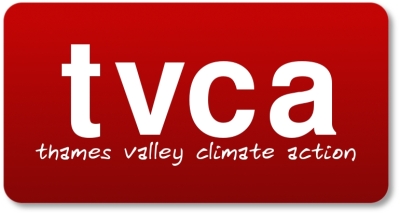The best way to get involved with TVCA is to come to one of our meetings. Meetings are open to everybody who wants to take action to stop climate change. If you've got any questions please go to the contact page.
If you're new to TVCA you might want to read more about our meetings below, but the main thing is that you come along. See you there!
As we as having meetings, we also discuss things online in our Crabgrass group. If you've never heard of Crabgrass, you might want ot check out our introduction to Crabgrass page.
How our meetings work
We try to be as open & inclusive as possible. We use consensus decision-making to do this. If you've not been to one of our meetings before, or if you're not used to consensus decision-making, you might like to read this page before you come to our meetings (but it's not compulsory - the main thing is that you come to the meetings - we'll do our best to explain things at the start of each meeting, and don't be afraid to ask if you're not sure what's going on).
Consensus is a decision-making process that works creatively to include everybody in making decisions. Instead of simply voting for an item, and having the majority of the group getting their way, the group is committed to finding solutions that everyone can live with. This ensures that everyone's opinions, ideas and reservations are taken into account. But consensus is more than just a compromise. It is a process that can result in surprising and creative solutions - often better than the original suggestions.
Also, when we're making decisions we try and hear what other people are really saying rather than trying to catch them out or win the argument. We call this process active listening.
Here's how we do it …
Setting an agenda
Our meetings start with setting an agenda. Anybody can put items on the agenda, and if you have an issue that you would like to discuss we would strongly encourage you to speak up and get it on the agenda. It's common for agenda items to fall into two categories - announcements and discussion items.
Choosing a facilitator
The facilitator's job is to make sure that the group gets through the agenda, that everybody has a say in making decisions, and that decisions are made (not just talked about). People are asked to volunteer to be the facilitator once the agenda has been set. The facilitator will not normally take part in the general discussion (although there is room for them to 'step outside the facilitation role' to do so if they feel very strongly about something that's being discussed). If there is a topic the facilitator wants to significantly contribute to, they can ask somebody else to facilitate that part of the meeting. Facilitating meetings is often good fun and you really feel that you're supporting the group to achieve it's goals, but it only works if everybody respects and supports the facilitator.
Proposals - making decisions
Decisions are usually made by somebody stating a proposal. Once there has been discussion of the proposal (which can include 'friendly amendments' - minor changes to the proposal to improve it), the facilitator will test for consensus. This involves asking for blocks, stand-asides and consensus (although some facilitators ask for stand-asides first).
- Blocks are where people feel so strongly that the proposal should be rejected that they would consider leaving the group if the proposal is passed. People that block will be asked why they are doing so in the hope that the proposal can be modified to address their concerns. Ultimately, if there is a block, consensus has not been reached and the decision will not be taken. If you find yourself blocking a lot it could be that you don't share the same values and vision as the rest of the group and you might think about leaving the group for one that does share your values.
- Stand-asides are where people do not actively support the proposal, but are OK for it to go ahead. As with blocks, people that stand aside will be asked why they are doing so that the group can understand the concerns people have and, hopefully address them. If lots of people stand aside the facilitator may decide that consensus has not been reached and look to reform the proposal. If only a small number of people stand aside the facilitator may decide to go ahead and check for consensus.
- Consensus is when people actively agree to the proposal and are willing to implement it. If you consent to the proposal, show this with the twinkling hands signal.
Hand signals
We use a range of hand signals to make meetings run more smoothly and help the facilitators spot emerging agreements.
 Raise one hand when you wish to contribute to the discussion with a general point. Facilitators normally allow people to speak in the order that they raise their hands, but sometimes people that have spoken less may be given priority.
Raise one hand when you wish to contribute to the discussion with a general point. Facilitators normally allow people to speak in the order that they raise their hands, but sometimes people that have spoken less may be given priority.
 Raise both hands if your point is a direct response to the current discussion. This allows you to jump to the head of the queue, so use it wisely (or the facilitator may start ignoring you!).
Raise both hands if your point is a direct response to the current discussion. This allows you to jump to the head of the queue, so use it wisely (or the facilitator may start ignoring you!).
 Raise one or both hands and wiggle when you hear an opinion that you agree with, wave a hand with your fingers pointing upwards. This saves a lot of time as people don't need to chip in to say "I'd just like to add that I agree with that point." This is sometimes called a twinkle. Some people use a 'reverse twinkle' (hands pointing down and wiggling) to show disagreement with the point being made.
Raise one or both hands and wiggle when you hear an opinion that you agree with, wave a hand with your fingers pointing upwards. This saves a lot of time as people don't need to chip in to say "I'd just like to add that I agree with that point." This is sometimes called a twinkle. Some people use a 'reverse twinkle' (hands pointing down and wiggling) to show disagreement with the point being made.
 Make a 'T' to make a process or technical point (e.g. "we're meant to be discussing X, but now we're discussing Y" or "It's now 7.55 and we said we'd finish this discussion by 8.00.").
Make a 'T' to make a process or technical point (e.g. "we're meant to be discussing X, but now we're discussing Y" or "It's now 7.55 and we said we'd finish this discussion by 8.00.").
There are some other hand signals that some people use in our meetings. If you see somebody making a hand signal that you don't understand it's perfectly OK for you to raise a technical point and ask what the signal means.
Other meeting processes
There are a couple of other things we use to make sure our meetings are inclusive, and to give the facilitator an indication of what people are thinking:
- Go-round is where each person in the group takes it in turn to say what they are thinking and/or how they are feeling about an issue. It's a really useful way of gauging where each person is. Each person has the opportunity to say what's on their mind without being interrupeted by others, and without it leading to a general discussion there and then. If you don't feel ready to say anything when it's your turn, it's OK to say you want to come in at the end of the go-round.
- Temperature check is a way for the facilitator to guage how passionate each person in the group is about the issue being discussed. Normally people will be asked to raise their hands if they are passionate about the topic, or to lower them if they don't think it's that important. In general, if the group is not very passionate about something the facilitator will suggest moving on; if people are very passionate then more discussion may be warranted.
Final comment
So, you've read this far about our group decision-making processes - well done! But just in case you're thinking "good grief, TVCA is just wrapped up in process stuff" we'd like to make it clear that we aren't. We use these processes because we've found that they work in organising direct action against climate change - and that's what we're about. We're very open to comments or suggestions on improving our processes. Stopping catastrophic climate change is what we're about.
More about consensus decision-making & facilitation
If you want to find out more about consensus decision-making try these places (and if you know of other good resources, please contact us):
- Seeds for Change.
- People & Planet on facilitation and participatory decision-making.
